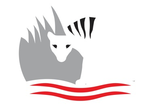|
We spent just on 3 weeks exploring the BVIs and this was as far north as we went this season. The self-governing British territory consists of 4 larger islands (Tortola, Anegada, Virgin Gorda, and Jost Van Dyk) and 32 smaller islands and islets, 20 of which are uninhabited, and with a total area of about 150sq km. The BVIs are physically very close to the USVIs (which due to the high level of entry bureaucracy we decided to skip). There are also a couple of Spanish Virgin islands but they are a bit out of the way, making the sailing angle of a return journey even worse than the one we had. The islands do not seem all that British, although English is the official language, the $USD is the official currency. The inhabitants of the islands, are mostly descendants of slaves imported in the 17th and 18th centuries to work the sugar plantations. The BVIs are hugely popular with charter boats and here we saw the highest concentration of them so far, and mostly catamarans, very few monos. Most popular anchorages have mooring buoys put in place by the local authorities, yacht clubs or National Parks and the price is set at US$30 per night! Some bays are completely full of them, making anchoring very challenging if not impossible. We generally avoided those spots if we could. That said, without the buoys I can imagine it would be sheer chaos in the popular bays, with so many “inexperienced” charter boats vying for space. It was nice to be able to do short hops from island to island, bay to bay, without having to change countries! We didn’t do a lot of exploring ashore or inland on the islands. The islands are quite steep so walking anywhere, other than along the beaches, involves a serious trek. Private, gated mansions and thick forest also limit access to the interior and in some of the townships the impact of Cyclone Irma, that came through in 2017, is still quite evident. 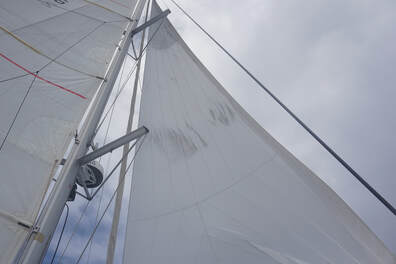 Yes its anti-foul on the gennaker! Yes its anti-foul on the gennaker!
Getting there
We are away just after 4am for the 84nm journey from Marigot Bay in St Martin (FR) to Spanish Town on the island of Virgin Gorda, BVIs. We hoist the main with 1 reef as we are expecting the usual 20+kts but downwind for a change. Its lovely to have the wind behind us and the following sea is not too rough, although there are some cross swells. We pull out the full genoa and change to a goosewing configuration. As the breeze starts to lighten we shake out the reef and switch to the gennaker, goosewinged. We are getting along quite nicely when BANG! we snap the gennaker halyard and the sail comes crashing down and heads under the boat. Keith was able to get it out of the water but it is covered in antifoul – not a good look. We once again put it up on the kite halyard but the gennaker halyard is well and truly buried inside the mast. Surprisingly we don’t see many other yachts along the way, and the rest of the journey is pleasant and uneventful. We come through the passage between Fallen Jerusalem Island and the southern end Virgin Gorda, avoiding “The Blinders” – some nasty rocks which are awash but well charted and clearly visible in daylight. We sail past the iconic “Baths” and drop the sails before motoring into St Thomas Bay, Spanish town. We drop anchor inside the mooring buoys and are informed by another yacht that we can’t check in here. I thought that might be the case, although we were still able to select it on the SailClear form. They don’t have the facilities here to do the Covid checks so we have to go to Road Town, on the island of Tortola. It’s already after 4pm and it’s a couple of hours away so we decide to go early tomorrow morning as we still have time on our Covid test clock. We treat ourselves to welcome cocktails and have an early night.
Another early start the next morning to motor the 22nm into Road Town, on Tortola island. We anchor off the ferry wharf and take the RIB to check in. The “dinghy dock” (ie the shore end of the ferry wharf) is a bit dodgy, solid concrete, very surgy and a long way up! A security guard rushes over and when we ask for check-in he ushers us around the back of the building toward the health officials. We pass the health check and then go into immigration and customs. US$40 all up, including the pass for the national park. We head to an ATM but don’t bother hanging around Road Town. There are quite a few vacant lots around town and we realise later that the buildings here had been razed by Irma and not rebuilt. We head back across to Virgin Gorda and anchor at Valley Trunk Bay, which is just north of The Baths. Some fellow cruisers mention a cable on the bottom and when we swim the anchor can see that it’s just beside our anchor. Also the anchor is not that well set on hard ground. Just as we are resetting it another cat is leaving who was closer in to the beach so we motor up to take their spot. A skippered charter boat charges towards the same spot at a rate of knots, giving us the glare and expecting us to back off. She clearly has never skippered on Sydney Harbour for NYE and Keith stares her down so we win out and anchor closer to the beach. The water is so crystal clear we can see the anchor from the foredeck! We are still quite tired and decide to stay for a few days as it is really lovely and calm. Keith goes up the mast and tries to find and retrieve the gennaker halyard but it is firmly stuck and he ends up cutting it off. I go for a bit of a snorkel but there is not much sea life and the coral is all dead.
In the morning we dinghy over to visit the “iconic” Baths, a short distance to the south. It’s not permitted to anchor here and dinghy’s are not allowed on the beach either but some mooring buoys are provided for daytime use only. We tie the dinghy to one of these, swim ashore with our masks and snorkels and we are the first on the beach. A couple of cats have already picked up buoys but they seem more intent on fishing off the back of the boat than enjoying the location.
The area itself is a small beach surrounded at either end by huge boulders of various shapes. How they got here is a bit of a mystery, but it’s quite amazing how they are stacked here as if they were tossed down from above. Waves crash in between them and the sand is beautiful and white. There is a cave formed by boulders at one end of the beach that you go into and see daylight up above. There is also a small beach bar as well, but it’s not open yet and the crowds are starting to arrive so we head back to ITIKI.
In the afternoon I take a SUP to the beach by our anchorage and walk along it. There are also some boulders here that are quite spectacular and again the sand is beautiful and clean. The water colour is incredible as well. Plus there are no other people here! Sadly, we can’t put the drone up as it’s a no-fly zone, due to the proximity of the airport.
We can see the mooring buoys at The Baths from our anchorage and by 8:45am the next morning there are no buoys! Completely full of charter cats! We must have got lucky yesterday, maybe it was “changeover day” for the rentals. We decide to put the SUPs in the water and go for another look between there and our anchorage. We follow the water’s edge and stop for a swim at the beach south of ours. There is no-one around at all and the water is again beautiful and clear. We can take the SUPs into The Baths as well and despite the number of boats anchored, few have made it to the beach yet so it is not too bad. We get our picture taken and head back to the boat. In the afternoon the boat that told us about the underwater cable is leaving but their anchor is stuck between two rocks. Keith heads over in the dinghy to help try and dislodge it. They have managed to attach a trip line to it and eventually it shifts and they are off.
Several quite large catamarans have turned up at our anchorage, obviously attracted by ITIKI. Keith makes another attempt to retrieve the halyard and this time, incredibly, finds the other end of it! It’s difficult to pull through though and he manages to get about a meter out. To be continued. We up anchor and head over to take a look at Dog Islands just to the north of us. We could see one beach from our anchorage that looked ok, and there has been one powerboat anchored there the whole time. As we get closer we see it’s not much of a beach and no anchorage, and in fact the powerboat is on the shore! We head around the Western side of Great Dog Island and see there are some mooring buoys here, it’s quite wild but not what we are looking for so we go between George Dog Island and Great Dog Island and head for Savannah Bay, which is also on Virgin Gorda Island and 7nm from last night’s anchorage. Here we need to enter in the bay at the southern end where there is a gap in the reef, and anchor in sand between the reef and the shore. We anchor in what looks like sand but turns out to be hard so we move a little closer in to get a better set in nice sand. There is a beautiful long, white beach ashore and we watch as the 7 crew from a large motor yacht bring umbrellas, beach chairs, dining table, BBQ etc ashore for the 3 “guests” to enjoy.
We go ashore in the dinghy and have a bit of an adventure as there is quite a bit of surf hitting the shore, despite the protection of the reef. We were getting close to shore checking whether it was safe to go in and I looked back to see a largish wave about to break on us! Too late! We copped it side on then the prop we hit a rock as we tried to manoeuvre away and the engine stopped. Another wave then took us broadside and fortunately pushed us nose in towards the shore. We surfed in and jumped out to pull the dinghy up the beach. Not quite as we had planned, but hopefully the powerboat people didn’t notice. We walked nonchalantly along the beach and back past them and they did seem to be smirking a bit. We noticed that they have written their boat name in the sand, so we did the same. Leaving the beach in the dinghy was an even bigger challenge. Our first attempt, the dinghy got swamped while I was in it. Keith wasn’t in yet and got knocked over, losing his good Oakley sunglasses. I managed to jump out and pull the dinghy onto the beach. We were lucky not to capsize! Keith searched in vain for his glasses. The second attempt at launching was more successful, although still a bit hair raising! The dinghy is full of sand and a fair bit of water and we are both soaked so we go back to ITIKI to catch our breath. Fortunately there were no phones in pockets etc… Keith takes a paddle board in to look for his glasses on the off chance they have washed ashore, like Martin’s flip-flop in The Canaries. Meanwhile I clean the sand out of the dinghy. No luck with the sunglasses unfortunately.
It was a rolly and noisy night with waves slapping the hull and knocking us this way and that, so we decide leave early. We head out taking a tour around Seal Dog Island before heading into Prickly Pear anchorage 7nm away in Gorda Sound. We can see Necker Island as we pass through the entrance to the Sound. This is Richard Branson’s private island home which can be rented out in its entirety (48 guests max) or at certain times of the year, by individual cabins. Lord only knows what the price tag is! If you have to ask you can’t afford it! Anyway there are quite a few boats in close at to the shore at Prickly Pear Island when we arrive so we anchor a bit further out/north. Anchor sets well in sand and the water is lovely, lots of turtles here and we immediately like the place. We dinghy over to Leverick Bay Marina on the opposite side of the Sound, to take a look around. It is a small marina with a bar/restaurant. There is a small market here so we get a couple of things and head back to the boat.
We spend the afternoon turtle spotting from the boat, even seeing a ray jumping out of the water – amazingly we were both looking at the right time. Keith dropped some food scraps off the back of the boat a few small fish turned up for a meal, as well as a rather sinister looking Remora. In the afternoon we dinghied around to the Bitter End Yacht Club and to have a drink. It’s a very laid back place with a small marina and busy little bar, as well as a few villas and a restaurant. There is a mini-market here as well with a rather gourmet and pricey selection.
The next morning we dinghy over to Leverick Bay to get some fuel for the RIB, then to the next bay around to find a skip for the garbage, thus saving the US$2.50 fee that Leverick Bay wanted (oh it’s a matter of principle!). The wind has really gotten up and its quite bouncy going across the bay so I got a bit damp in the front seat. We dropped into The Bitter End gourmet market and on the way back to ITIKI go ashore at Prickly Pear island to have a wander around. The beach bar here looks well maintained but doesn’t seem to have been open for a while. We walk along the beach and wander back to a small lagoon. Keith decides to bail out a dinghy that has been sitting at the dock for a while, slowly deflating and filling with water.
Left at 7am the next morning and had a great reach across to Anegada, 17nm north. The island is only 35 square metres with the highest point being 10m! Had 18-20kts, gusting 22s and it’s a little bit rough as the passage is quite exposed. Making 8kts VMG we arrived in good time and picked up a mooring buoy - the bay is quite shallow and there is limited anchoring area. It’s reasonably protected but still a bit of swell coming in. Ashore we rented a scooter to explore this small island, heading west first to Cow Wreck Bay. It’s a lovely beach with a bar and some accommodation but not many people around. We have a bit of a walk along the beach and then head back to the Bay.
We have booked The Wonky Dog restaurant for lobster dinner tonight so we have lunch on ITIKI and to pick up rain jackets as it looks a little threatening. Next we head east and find the flamingo lookout beside a large and mostly dried out lagoon. Of course there are no flamingos! I find out later they head out to feed in the morning and don’t come back until the evening. I guess that is what we have been doing wrong all the time, we have been visiting the flamingo haunts during the day. Nevertheless we have a great view across the huge pond which takes up a big chunk of the western end of the island. We head further along the road past the botanical gardens, which is a traffic island with a few trees in it. Also the Iguana Sanctuary looks like it has been closed for a while. I hope those Iguanas all got rehabilitated ok! We reach The Settlement, which is the main town of the island, but it is more of a collection of shacks and a few goats than an actual town. Next it is up to the north of the island were there some lovely beaches, including Jack Bay and Flash of Beauty Beach - I go for a swim at Loblolly Bay. Heading back we stop at Fisherman’s wharf, which is a smelly mangrove swamp with a few dead boats. We stop at a lookout for the conch shell mounds and it is possible to see a couple of them through the binoculars. The largest one is on the south east tip of the island, it must be huge. They are protected relics of the Amerindians and can only be visited with a guide.
We head to the restaurant around 6:30, Keith has ordered Lobster Thermidor and I got Jamaican Jerk lobster. They were huge beasts and we are totally stuffed afterwards and we have definitely “done” Anegada!
1 Comment
Alan
16/6/2022 11:38:44 am
So glad you didn’t get capsized in the Dinghy, but I would loved to have watched it. 😂😂😂😘
Reply
Leave a Reply. |
AuthorAfter more than 5 years of (minus time off for Covid) and more than 27,000nm Lynda has finally got the hang of this cruising life Archives
June 2024
Categories |
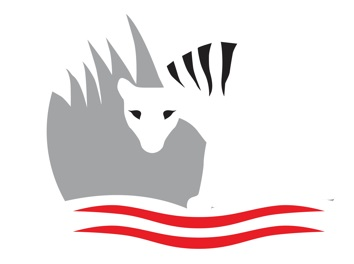
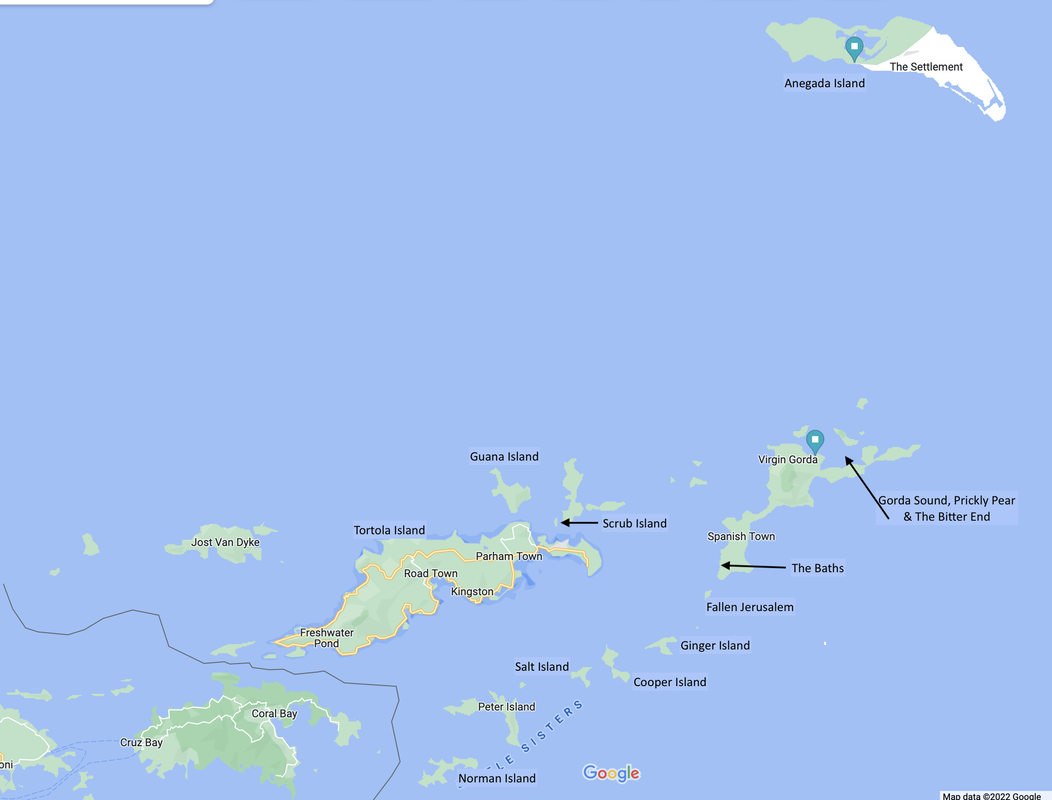
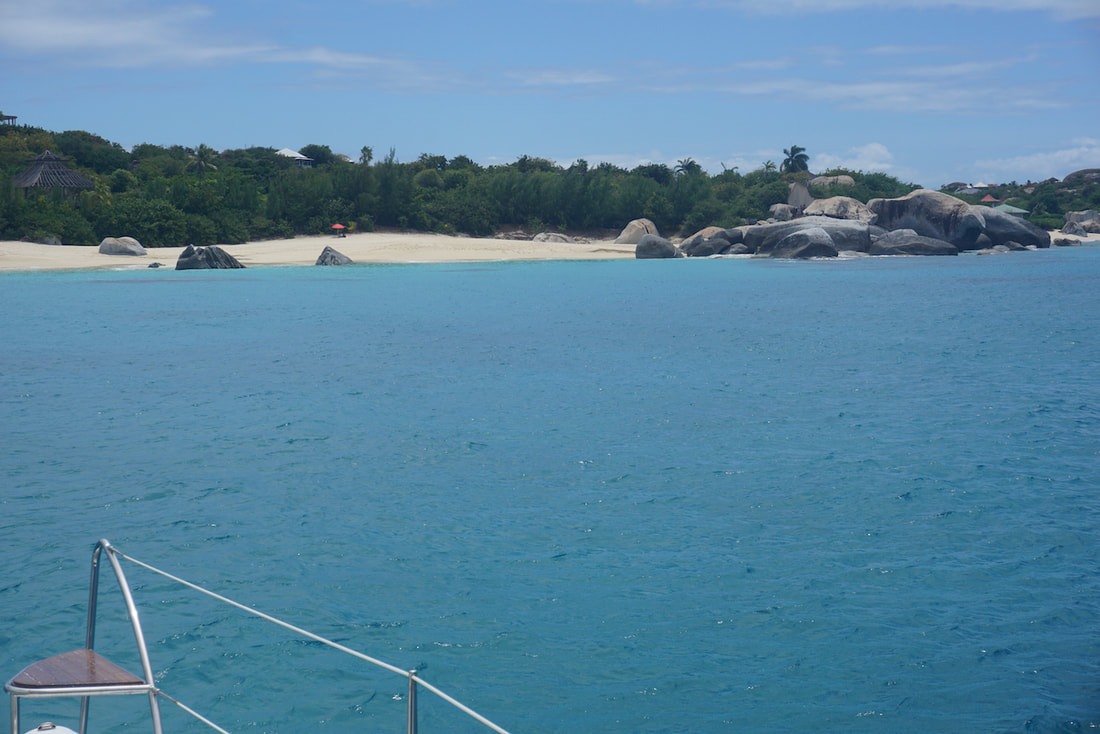
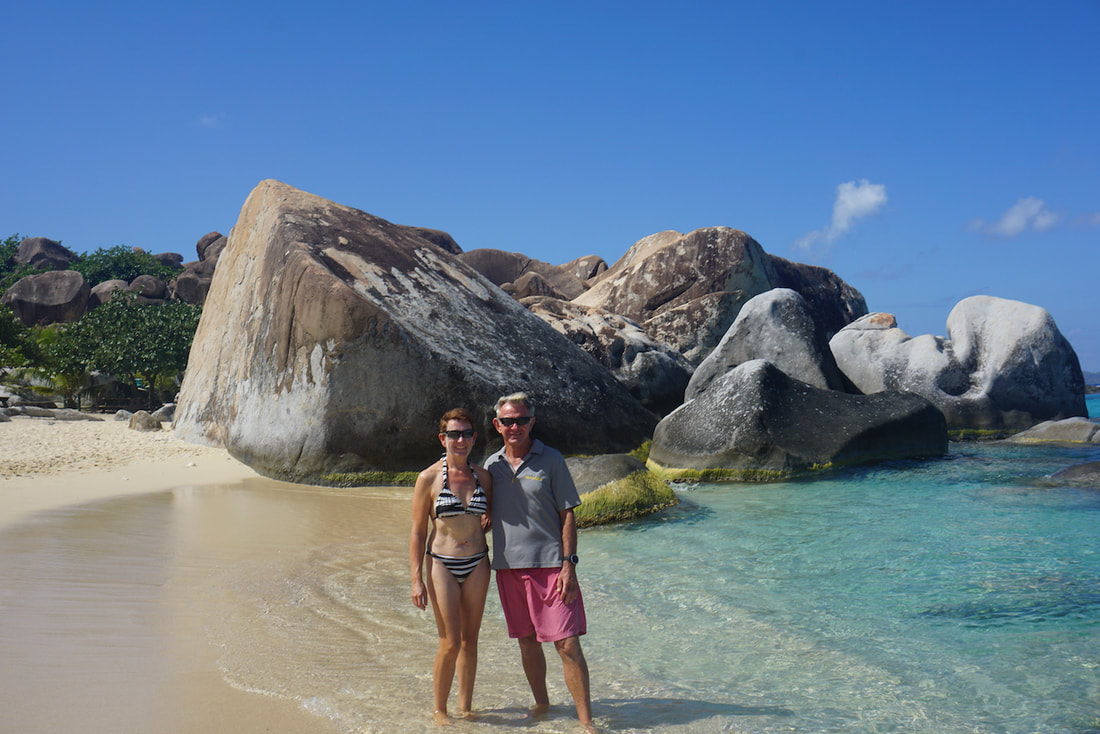
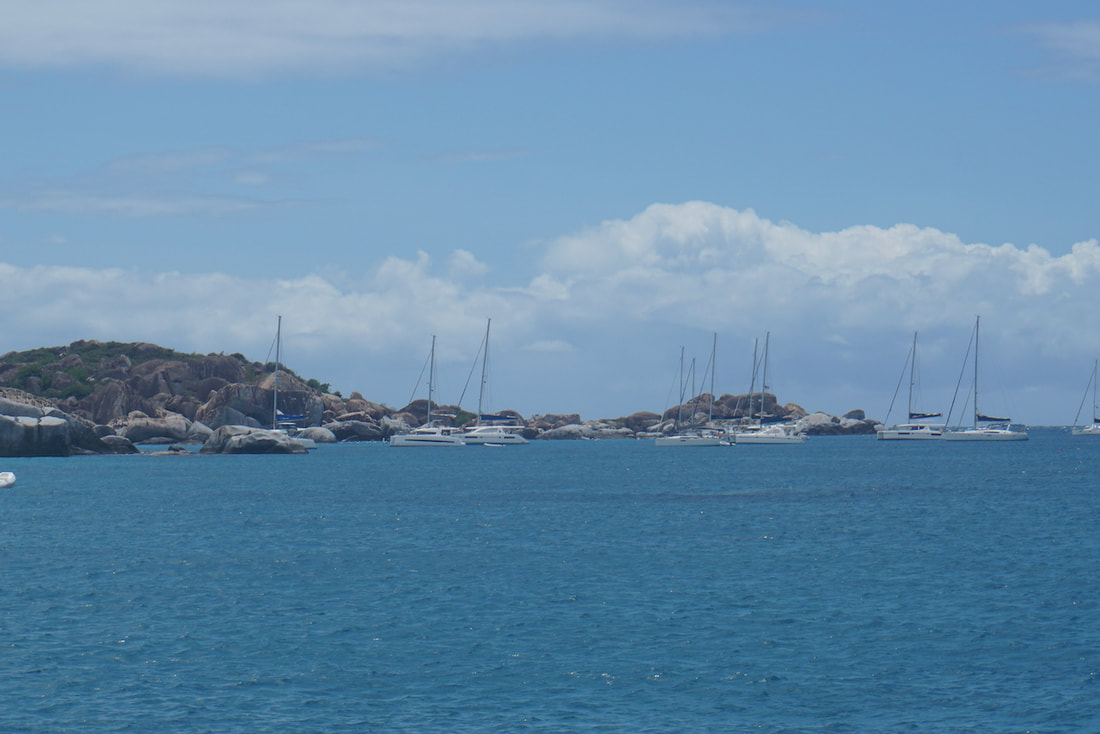
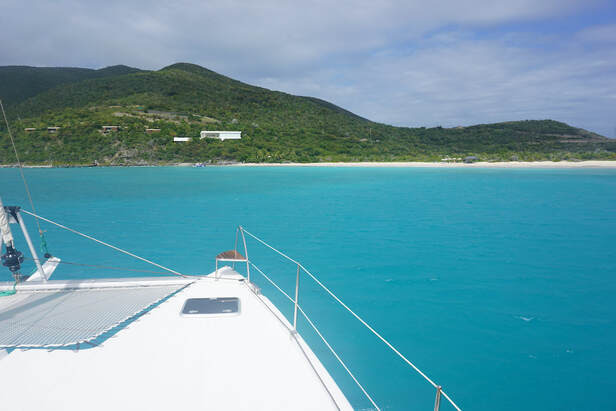
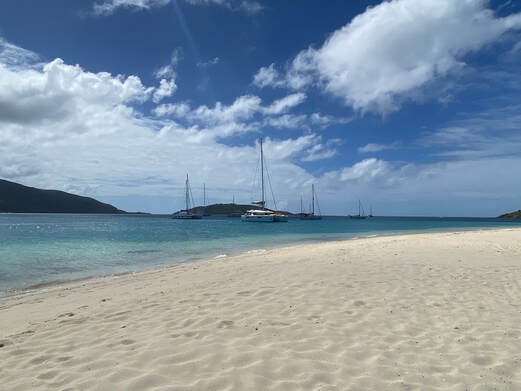
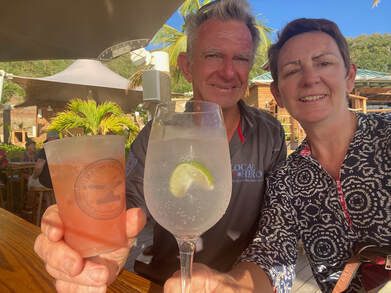
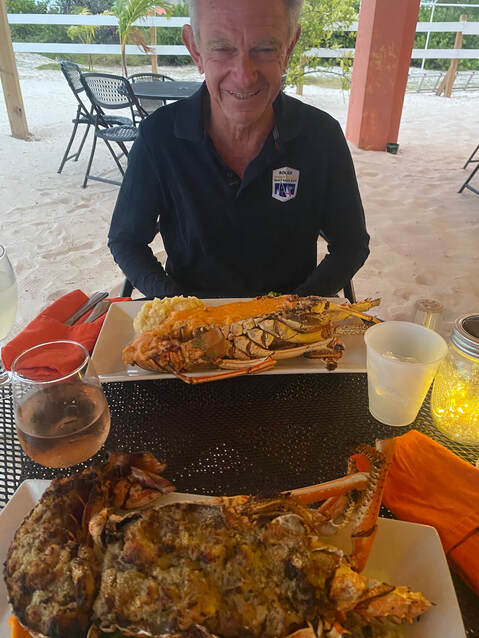

 RSS Feed
RSS Feed
